Mini reviews
Katri Lipson: Jäätelökauppias [The ice-cream vendor]
25 October 2012 | Mini reviews, Reviews
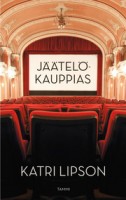 Jäätelökauppias
Jäätelökauppias
[The ice-cream vendor]
Helsinki: Tammi, 2012. 300 p.
ISBN 978-951-31-6868-1
€ 36.20, hardback
The Finnish novel of the 2000s has been successfully set in other cultures. Like Kristina Carlson and Sofi Oksanen, Katri Lipson went her own way as an author in her award-winning debut novel Kosmonautti (‘Cosmonaut’, 2008), which was set in the Soviet Union of the 1980s. In her second novel Lipson (born 1965), who works as a doctor in Helsinki, portrays life in post-war Czechoslovakia. The novel begins with the making of a film. The director wants to work without a script, which is only in her head. The filming proceeds chronologically, so that the actors will not anticipate what happens to the characters in the future. The film tells the story of a man and a woman’s flight from danger in 1942. Although they do not know each other, they pretend to be a married couple and hide in the countryside. What will be their fate during the war and afterwards is left to the reader; the characters can be combined with those appearing in the novel’s later stages, in the 1960s and even the 1980s. Lipson’s technique boldly breaks with the supremacy of narrative and calls into question the construction of historical truth.
Translated by David McDuff
Jukka Tarkka: Karhun kainalossa. Suomen kylmä sota 1947–1990 [Under the arm of the Bear. Finland’s Cold War 1947–1990]
18 October 2012 | Mini reviews, Reviews
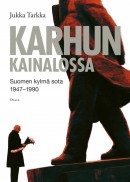 Karhun kainalossa. Suomen kylmä sota 1947–1990
Karhun kainalossa. Suomen kylmä sota 1947–1990
[Under the arm of the Bear. Finland’s Cold War 1947-1990]
Helsinki: Otava, 2012. 495 p, ill.
ISBN 978-951-1-25796-7
€ 36.70, hardback
Historian and author Jukka Tarkka’s book describes relations between Finland and the ‘Bear’ (i.e. the Soviet Union) during the Cold War, from the Paris Peace Treaty which ended Finland’s part in the Second World War to the new interpretation of some of the Treaty’s key points in 1990. Many people consider that Finland fell too much under the Soviet Union’s influence and became ‘Finlandised’. Tarkka shows that although in some cases Finland did give in, it also resisted Soviet pressure, built cultural and economic relations with the Western democracies and established an independent defence. In the light of its declared neutrality during the Cold War, Finland’s rapid integration into the EU is not at all surprising. The central figure in the thematically structured book is Urho Kekkonen, the country’s president for a quarter of a century. Kekkonen led the political struggle, but at the same time used the threat of the eastern neighbour as a weapon of domestic policy, as did many less influential figures in his shadow. Without sacrificing scholarly rigour Tarkka has written a popularly accessible outline of an important subject, relying on sources and references.
Translated by David McDuff
Sofi Oksanen: Kun kyyhkyset katosivat [When the doves disappeared]
9 October 2012 | Mini reviews, Reviews
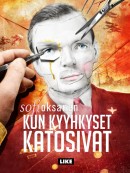 Kun kyyhkyset katosivat
Kun kyyhkyset katosivat
[When the doves disappeared]
Helsinki: Like, 2012. 365 p.
ISBN 978-952-01078-19
€ 27.90, hardback
Four years after the huge national and international success of her third novel Puhdistus (Purge, 2008, now translated into 38 languages), Sofi Oksanen has published a new novel to the accompaniment of trumpets and drums – a launch cruise to Tallinn, Estonia, workshops and public readings. The Finnish film version of Puhdistus received its world premiere at the same time. Oksanen has earned her star status as a writer, but Kun kyyhkyset katosivat is not as good as its predecessor. The story of Estonian freedom fighter (‘Forest Brother’) Roland and his cousin Edgar, an opportunist who manoeuvres his way through the Nazi and Soviet occupations of Estonia from 1941 until the apparent liberalisation of the 1960s, is thin and fragmentary. The language and style are uneven and diffuse, while Edgar’s chameleon-like shifts of identity from pro-German sympathies through Siberia to complicity with the KGB deserve to be more carefully explored. While the book’s themes are unquestionably authentic and relevant, they don’t really blend together into a moving novel in the way that Puhdistus does.
Translated by David McDuff
Jussi Pekkarinen: Maailmanluokan tarkkailupaikka. Suomen Lontoon suurlähetystön historia [A world-class observation post. The history of Finland’s London embassy]
28 September 2012 | Mini reviews, Reviews
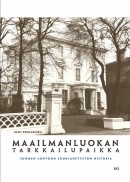 Maailmanluokan tarkkailupaikka. Suomen Lontoon suurlähetystön historia
Maailmanluokan tarkkailupaikka. Suomen Lontoon suurlähetystön historia
[A world-class observation post. The history of Finland’s London embassy]
Helsinki: Finnish Literature Society, 2012. 380 p., ill.
ISBN 978-952-222-365-4
€ 38, hardback
Finland’s diplomatic mission in London began its formation after the country gained its independence in 1918 and was officially recognised by Britain in 1919. The Embassy has always been important to Finland because of Britain’s leading significance for Finland and because Britain has been one of Finland’s most prominent trading partners. This interestingly written history, based on Finnish and British sources, also portrays the development of relations between the two countries. The ambassadors have been colourful and quick-tongued personalities; Pekkarinen describes some of the blunders caused by staff conflicts and cultural differences. As diplomacy is not merely representation – which in itself is a full-time job – it requires a mastery of issues relating to trade and politics. In addition to its depiction of the day-to-day work of the embassy staff, the book provides more general information about the diplomatic mission. Pekkarinen – a researcher in the Foreign Ministry – covers the period up to the early 1990s, but the concluding part of the book is a review of the embassy’s situation today by the current ambassador.
Translated by David McDuff
Monika Fagerholm: Lolauppochner [Lola upside down]
20 September 2012 | Mini reviews, Reviews
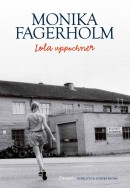 Lolauppochner
Lolauppochner
[Lola upside down]
Helsinki: Schildts & Söderströms, 2012. 461 p.
ISBN 978-951-52-2997-7
€ 31, hardback
Lola ylösalaisin
Suomentanut [Translated into Finnish by]: Liisa Ryömä
Helsinki: Teos, 2012. 300 p.
ISBN 978-951-851-480-3
€28.40, hardback
Lolauppochner (‘Lola upside down’) is a more authentic crime novel than the same author’s Den amerikanska flickan (English translation: The American Girl, 2004) and Glitterscenen (The Glitter Scene, 2009), though they too wove their dense fiction around an old crime. Readers who are at ease in Fagerholm’s luxuriant wordscapes with their tragic teens, country bumpkins and summer visitors will still be able to find their way around the small community where Jana Marton, a teenage girl on the way to her job at the local store, discovers the corpse of a boy, a key player among the local gilded youth. The novel’s opening, and many sections that follow, are extremely effective, with sharp and lightning-swift characterisations and a fine intuition for both the fear and the excitement in the social circle where the murder turns up hidden connections like worms from the soil. But the novel is too long for its own good – somewhere towards the end it ceases to gain depth, and the gallery of characters starts to feel too big. All the same, this book is a must for Fagerholm’s readership at home and abroad. A bonus for locals – and attentive outsiders – is present in the outlines of the small seaside town of Ekenäs that can be glimpsed behind the text. They supply a kind of physical magic that rubs off on much else besides – characters, moods and sense of place.
Translated by David McDuff
Olli Jalonen: Karatolla
14 September 2012 | Mini reviews, Reviews
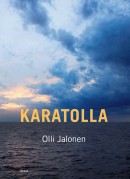 Karatolla
Karatolla
Helsinki, Otava, 2012. 238 p.
ISBN 978-951-1-26469-9
€34.10, hardback
Karatolla is a Finnish dialect word for a bonfire that is lit at New Year or Easter. One of the main characters in Olli Jalonen’s new novel (his twenty-first publication to date) is an artist called Valo, ‘Light’. By the fires of his youth he has come to learn that the world is composed of nine basic elements: fire, smoke, light, earth, water, snow, ice, air, and time. At the beginning of the twenty-first century Valo and his colleague the architect Silla set out to construct a major European art work in which pyramids built of the above-mentioned elements are assembled in Prague, Brussels, Santiago de Compostela, Krakow, Reykjavik, Bergen, Helsinki, Avignon and Bologna respectively. In this novel Jalonen (born 1954) develops themes from his previous novel Yhdeksän pyramidia (‘Nine pyramids’), published in 2000: the events have moved forward ten years. When the project is completed, a nascent love affair between Light and Silla ends when Light falls victim to a fatal illness. Jalonen’s narrative is fascinating; the construction of pyramids, the cities in which they are constructed and the characters are portrayed with great skill, developing themes of artistry, honesty and the fragility of love. Much open space is left for the reader’s thoughts and imagination.
Translated by David McDuff
Mirkka Lappalainen: Jumalan vihan ruoska. Suuri nälänhätä Suomessa 1695–1697 [The lash of God’s wrath. The Great Famine in Finland 1695–1697]
7 September 2012 | Mini reviews, Reviews
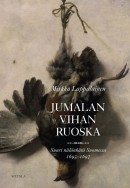 Jumalan vihan ruoska. Suuri nälänhätä Suomessa 1695–1697
Jumalan vihan ruoska. Suuri nälänhätä Suomessa 1695–1697
[The lash of God’s wrath. The Great Famine in Finland 1695–1697]
Helsinki: Siltala, 2012. 262 p., ill.
ISBN 978-952-234-140-2
€25.50, hardback
There were two major famines in Finnish history: the Great Famine of 1695–97 and the hunger years of 1867–68. Basing her work on the latest research, historian Mirkka Lappalainen has written a general study of the earliest and most deadly years of crop failure. The famine struck Europe just as it was experiencing the main phase of the so-called Little Ice Age. Finland was one of the worst affected countries, as it had only just begun to derive a living from agriculture, and nearly a third of its population died. Finland was governed by the autocratic, centralised great power Sweden; frosts and rains destroyed hundreds throughout the kingdom, but the magnitude of the disaster in Finland was increased by the bureaucratic inertia of the centre in distributing aid, as well as the emergency food (moss, for example) which caused intestinal disorders, and the spreading of disease by beggars. The aid was also distributed unequally within the regions of Finland. In her book Lappalainen describes the fates of kings, gentry and rural poor as reflected in sources that include letters and official court records.
Translated by David McDuff
Volgan mutkasta Siperiaan. Sukulais-kansat tämän päivän Venäjällä / From the Volga to Siberia. The Finno-Ugric Peoples in Today’s Russia
17 August 2012 | Mini reviews, Reviews
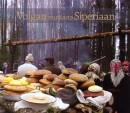 Volgan mutkasta Siperiaan. Sukulaiskansat tämän päivän Venäjällä
Volgan mutkasta Siperiaan. Sukulaiskansat tämän päivän Venäjällä
Toim. [Ed. by] Ildikó Lehtinen
Helsinki: Finnish Literature Society, 2012. 190 p, ill.
ISBN 978-952-222-345-6
€48, paperback
English-language edition:
From the Volga to Siberia. The Finno-Ugric Peoples in Today’s Russia
ISBN 978-952-222-346-3
€57, paperback
Finno-Ugric peoples make up 2.4 million of Russia’s inhabitants. This book examines the Khanty, Komi, Mari, Mordvins and Udmurt who live on the western side of the Urals, between the Volga River Bend and Western Siberia. The focus is on their ethnic identity, recent history and present-day life. Various points of view are represented in articles by expert scholars, and the subjects include language, literature, theatre, social life, and the status of the family and of women. These national cultures recovered after the most difficult part of the Soviet period, but in today’s Russia they and their languages are increasingly at risk of dying out. Russification is advancing not only because of government, but also as a result of industrialisation and urbanisation. Half of the population of these groups live in rural areas where traditions and folk beliefs are particularly strong. Photographs from different eras and drawings by Udmurt children depict the story of the indigenous cultures and the changes they have undergone. Some of the articles also shed light on the harsh situation of other Finnic peoples in Russia.
Translated by David McDuff
Rainer Knapas: Kunskapens rike. Helsingfors universitetsbibliotek – Nationalbiblioteket 1640–2010 [In the kingdom of knowledge. Helsinki University Library – National Library of Finland 1640–2010]
9 August 2012 | Mini reviews, Reviews
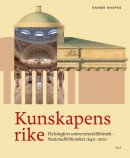 Kunskapens rike. Helsingfors universitetsbibliotek – Nationalbiblioteket 1640–2010
Kunskapens rike. Helsingfors universitetsbibliotek – Nationalbiblioteket 1640–2010
Helsingfors: Svenska litteratursällskapet i Finland, 2012. 462 p., ill.
ISBN 978-951-583-244-3
€54, hardback
Tiedon valtakunnassa. Helsingin yliopiston kirjasto – Kansalliskirjasto 1640–2010
[In the kingdom of knowledge. Helsinki University Library – National Library of Finland 1640–2010]
Suomennos [Finnish translation by]: Liisa Suvikumpu
Helsinki: Finnish Literature Society, 2012. 461 p., ill.
ISBN 978-952-222-272-5
€54, hardback
The National Library of Finland was founded in 1640 as the library of Turku Academy. In 1827 it was destroyed by fire: only 828 books were preserved. In 1809 Finland was annexed from Sweden by Russia, and the collection was moved to the new capital of Helsinki, where it formed the basis of the University Library. The neoclassical main building designed by Carl Ludwig Engel is regarded as one of Europe’s most beautiful libraries and was completed in 1845, with an extension added in 1906. Its collections include the Finnish National Bibliography, an internationally respected Slavonic Library, the private Monrepos collection from 18th-century Russia, and the valuable library of maps compiled by the arctic explorer Adolf Erik Nordenskiöld. Renamed in 2006 as Kansalliskirjasto – the National Library of Finland – this institution, which is open to general public, now contains a collection of over three million volumes as well as a host of online services. This beautifully illustrated book by historian and writer Rainer Knapas provides an interesting exposition of the library’s history, the building of its collections and building projects, and also a lively portrait of its talented – and sometimes eccentric – librarians.
Translated by David McDuff
Joni Krekola: Maailma kylässä 1962. Helsingin nuorisofestivaali [The world comes to visit in 1962. Helsinki’s youth festival]
3 August 2012 | Mini reviews, Reviews
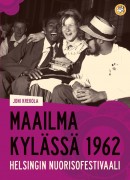 Maailma kylässä 1962. Helsingin nuorisofestivaali
Maailma kylässä 1962. Helsingin nuorisofestivaali
[The world comes to visit in 1962. Helsinki’s youth festival]
Helsinki: Like, 2012. 310 p., ill.
ISBN 978-952-01-0757-4
€ 27.10, paperback
In the summer of 1962, in the middle of the Cold War, a week-long youth festival was held in Helsinki. Behind the scenes of the event a propaganda war between East and West was being waged, something not uncommon at such festivals, which were the venue for meetings of the International Union of Socialist Youth (IUSY, founded 1907). The main organisers were the World Federation of Democratic Youth (WFDY, 1945), generally regarded as a Soviet propaganda agency, and the International Union of Students (IUS, 1946). The Finnish government’s initially lukewarm attitude to the event turned more positive as a result of the influence of the the Soviet Union. Helsinki hosted some 12,000 guests from all over the world at the ‘Peace and Friendship’ festival, with a couple of thousand Finns taking part. To Finns, the festival introduced colourful and exotic foreign life, a novelty in the country at the time. Resistance to the festival sparked youth riots which were suppressed by the police, and a smaller shadow event was organised mainly with CIA funding. Although the press condemned the unrest, it kept fairly silent about the festival itself. According to Joni Krekola, however, it was a success; in his interesting book he studies a major event that historians have overlooked, its diverse programme, its side- and after-effects, and its wider impact on society.
Translated by David McDuff
Matti Klinge: Pääkaupunki – Helsinki ja Suomen valtio 1808–1863 [Capital City – Helsinki and the Finnish government 1808–1863]
27 June 2012 | Mini reviews, Reviews
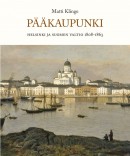 Pääkaupunki – Helsinki ja Suomen valtio 1808–1863
Pääkaupunki – Helsinki ja Suomen valtio 1808–1863
[Capital city — Helsinki and the Finnish government 1808–1863]
Kuvitussuunnitelma [Pictorial design by] Matti Klinge and Yrjö Klinge
Helsinki: Otava, 2012. 509p., ill.
ISBN 978-951-1-26235-0
€ 53, hardback
As a result of the war between Sweden and Russia in 1808–1809, Finland became an autonomous Grand Duchy of the Russian Empire. In 1812 Helsinki was made Finland’s new capital, being more suitable than Turku, the administrative city of the time, as it boasted features such as the coastal fortress of Sveaborg (Suomenlinna), which was important to Russia. In his new book, Emeritus Professor Matti Klinge gives an account of the development of Helsinki as a capital city. Between 1808 and 1843 the Grand Duchy established its central administrative office, its civil service and the University in Helsinki. Tsars Alexander I and Nicholas I wanted Finland to have a monumental capital; Klinge describes the implementation of the carefully detailed city plan and the key buildings. He portrays the work of the individuals who contributed to Helsinki’s development as well as the city’s political, social and cultural life – Helsinki’s history is essentially the history of Finland. Also published in Swedish, this extensive work, which owes its origin to the Historical Commission of the City of Helsinki, is illustrated in a rich and informative manner.
Translated by David McDuff
Jouni K. Kemppainen: Onnellinen mies. Arto Paasilinnan elämä [A happy man. The life of Arto Paasilinna]
21 June 2012 | Mini reviews, Reviews
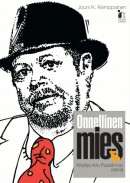 Onnellinen mies. Arto Paasilinnan elämä
Onnellinen mies. Arto Paasilinnan elämä
[A happy man. The life of Arto Paasilinna]
Espoo: Paasilinna, 2012. 307 p.
ISBN 978-952-5856-37-8
€ 28, hardback
Arto Paasilinna (born 1942) is an uncanny phenomenon. For Finns he is a popular, prolific author of picaresque novels – which in the 1970s, 80s and 90s were praised by the critics, while the books he produced later received less acclaim, though most of them have sold tens of thousands of copies. Paasilinna’s best-known novel is Jäniksen vuosi (The Year of the Hare, 1975). In Europe – particularly in France and Italy – he is considered to be a major natural philosopher. However, the charming social man of the world was capable of turning into a violent ruffian; journalist Jouni K. Kemppainen’s fluent biography highlights every aspect of the author’s character. The book describes the development of a boy from a poor northern Finnish family to an international best-selling author (his works have been translated into more than 40 languages) and introduces interesting correspondence between the author and his publisher. Kemppainen emphasises some recurring themes in Paasilinna’s work: relations between humans and animals, travelling. In 2009 the author suffered a head injury while drinking, and lost his memory almost completely. The title of his latest, thirty-fifth novel is Elävänä omissa hautajaisissa (‘Alive at his own funeral’, 2009). The impression that this biography leaves on the reader’s mind is a picture of a now gentle man who delights in the fact that he has accomplished all that he is reported to have accomplished – and in that he managed to survive.
Translated by David McDuff
Erik Kruskopf: Alvar Aalto kuvataiteilijana [Alvar Aalto as visual artist]
14 June 2012 | Mini reviews, Reviews
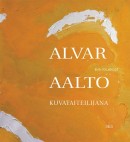 Alvar Aalto kuvataiteiljana
Alvar Aalto kuvataiteiljana
[Alvar Aalto as visual artist]
Suomentanut [Translated from Swedish by]: Leena Vallisaari
Helsinki: Finnish Literature Society, 2012. 215 p., ill.
ISBN 978-952-222-294-7
€ 45, hardback
Finland’s most famous architect Alvar Aalto (1898–1976) is also well-known as a designer, but his activity as a visual artist has remained less familiar. Aalto was interested in drawing and painting at a young age. He also received some training from professional artists, and before graduating as an architect he supported himself by producing vignettes, illustrations and cartoons. His best works are considered to date from the late 1910s and early 1920s, and were diverse in themes and technique. After the Second World War he painted exclusively abstract works in which the originality of his vision is most clearly expressed. He also produced sculpture, especially wood reliefs, which are related to his work as a designer. Aalto saw his visual art as being closely connected with his architecture, a branch of it. The book contains many reproductions of Aalto’s art and demonstrates his masterful, form-seeking creativity. Summaries in Swedish and English.
Translated by David McDuff
Rosemarie Tsubaki: Pehr Kalm, suomalainen Amerikan löytäjä [Pehr Kalm, the Finnish discoverer of America]
8 June 2012 | Mini reviews, Reviews
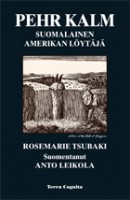 Pehr Kalm, suomalainen Amerikan löytäjä
Pehr Kalm, suomalainen Amerikan löytäjä
[Pehr Kalm, the Finnish discoverer of America]
Alkuteos [original work, in Italian]: Il Viaggio di Pehr Kalm in Nord-America 1747–1751. Dissertation, University of Genoa, 2002/2003
Suomennos [Translated by]: Anto Leikola
Helsinki: Terra Cognita, 2011. 199 p., ill.
ISBN 978-952-5697-49-0
€ 25, paperback
The Finnish naturalist and pastor Pehr (in Finnish, Pietari) Kalm (1716–79), a pupil of the famous Swedish botanist Carl von Linné, was professor of economics and rector of Turku Academy, the only university in Finland during its period under Swedish rule. Kalm gained his international reputation as a result of his account of a scientific expedition he made to north America in 1747–51, which was translated into several languages. The trip was the first scientific expedition to the New World, and Kalm paid close attention to nature as well as the economics, living conditions and culture of both colonists and native inhabitants. One of his aims was the gathering of plants for use in Sweden. Of the plants he brought back a species of hawthorn, creeper vine and purple-flowered raspberry are still cultivated in Finland. The German scholar Rosemarie Tsubaki’s doctoral thesis examines Kalm’s writings and complements it with material from other sources where Kalm’s notes have been lost. The Finnish translation is furnished with an introduction and expertly translated by Anto Leikola, Professor Emeritus of History of Science.
Translated by David McDuff
Markku Kuisma: Saha. Tarina Suomen modernisaatiosta ja ihmisistä jotka sen tekivät [The sawmill. A story about Finnish modernisation and the people who realised it]
29 May 2012 | Mini reviews, Reviews
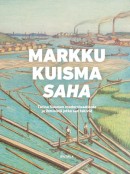 Saha. Tarina Suomen modernisaatiosta ja ihmisistä jotka sen tekivät
Saha. Tarina Suomen modernisaatiosta ja ihmisistä jotka sen tekivät
[The sawmill. A story about Finnish modernisation and the people who realised it]
Helsinki: Siltala, 2011. 235 p.
ISBN 978-952-234-069-6
€ 34.90, hardback
In his new book Professor Markku Kuisma, a specialist in economic history, approaches the modernisation of Finland in the 19th century from the perspective of the sawmill industry. In the mid 19th century, Finland’s forest reserves were, in relation to its population, among the greatest in Europe. The rise of the sawmill industry was made possible by Britain’s removal of taxation on industrial imports, the development of Finland’s railways and other means of transport, the removal of Finnish restrictions on the timber industry, the spread of steam saws and changes in society. The foundations of the breakthrough of the sawmill industry were laid in the 1860s, but it began to flourish gradually. Between the two world wars Finland became Europe’s biggest exporter of timber, and for a long time the country derived most of its export income from timber products. Kuisma also draws interesting portraits of the men who made the change possible both in government administration and economic life and laid the basis for industrial dynasties. Saha is a concise but illuminating and engrossing introduction to an important phase in the development of Finnish economic life.
Translated by Hildi Hawkins
